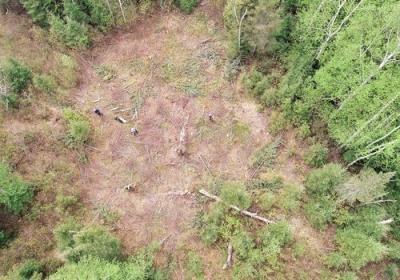Forest quality along many streams and riverbanks on the north shore of Lake Superior has been degraded in recent years, with heavy growth of hazel and alder brush and a lack of continuous forest canopy. A collaborative partnership used GLRI funding to restore more than 600 acres of riparian forest, improving water quality and forest resilience along Minnesota’s waterways.
The partnership planted more than 29,000 tree seedlings on about 90 miles of stream and riverbank bordering Lake Superior’s tributaries. The project also enhanced more than 3,000 acres of riparian areas through planting trees in forest canopy gaps along streambanks where the forest was degraded. Planting these trees will help to stabilize stream banks and decrease erosion. It will also provide shade to streams to maintain the cool water necessary for trout habitat. Ultimately, maintaining and enhancing tree canopy to reduce water temperatures and stabilize soil sediments will improve water quality.
Read the full story on the Forest Service website.


